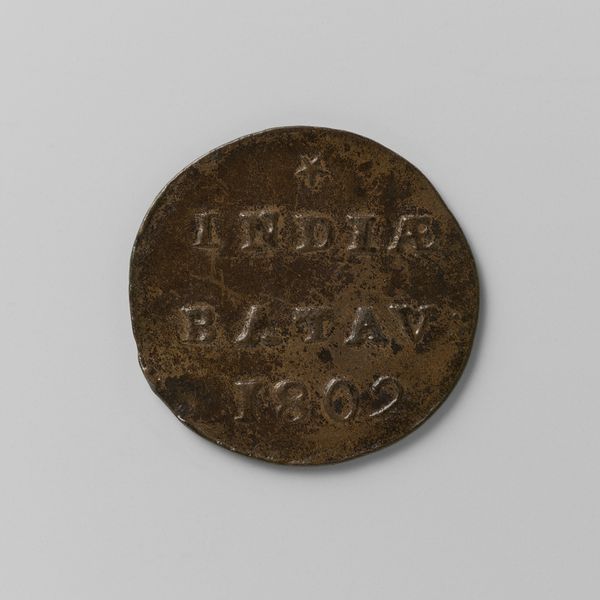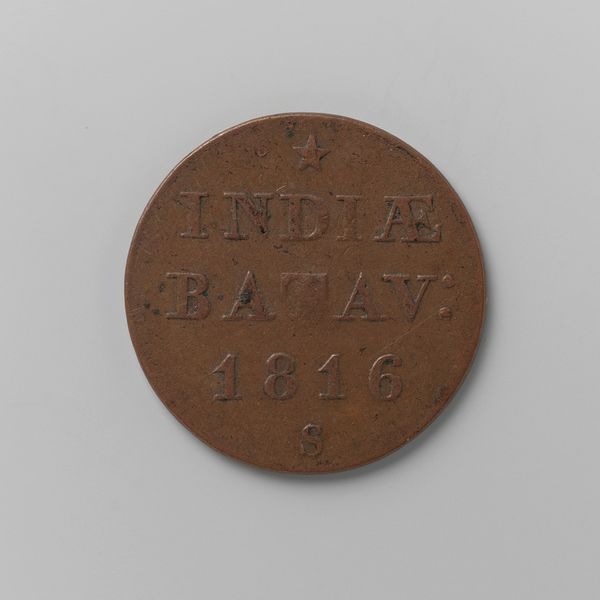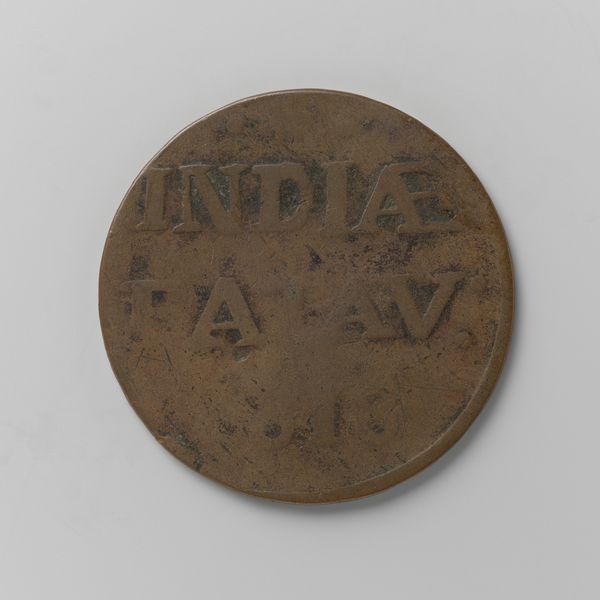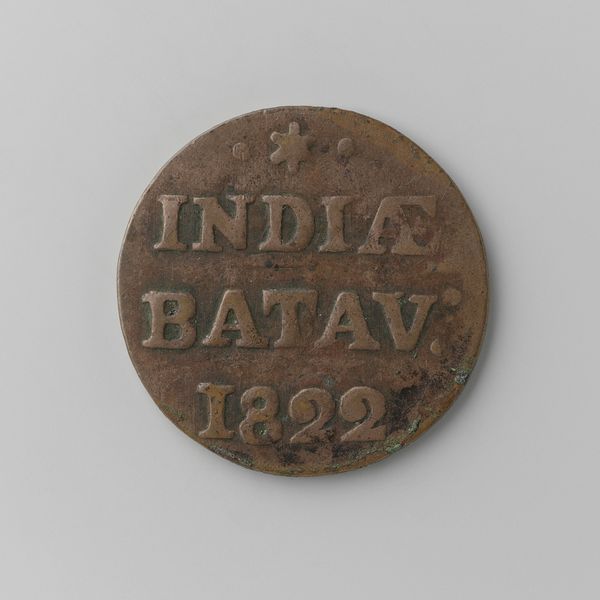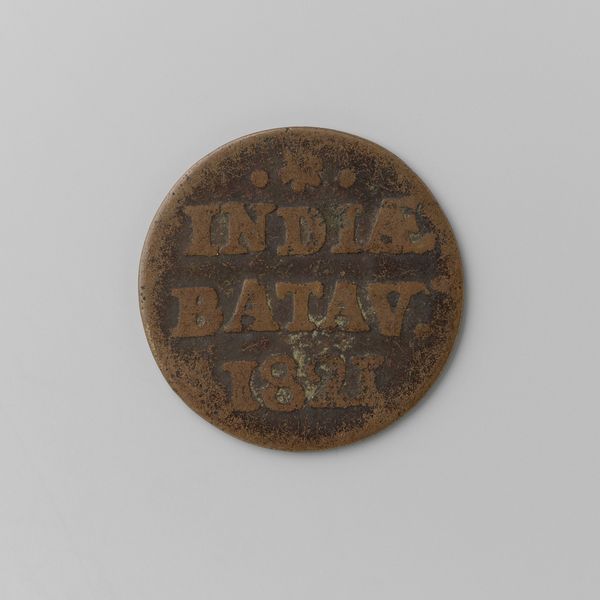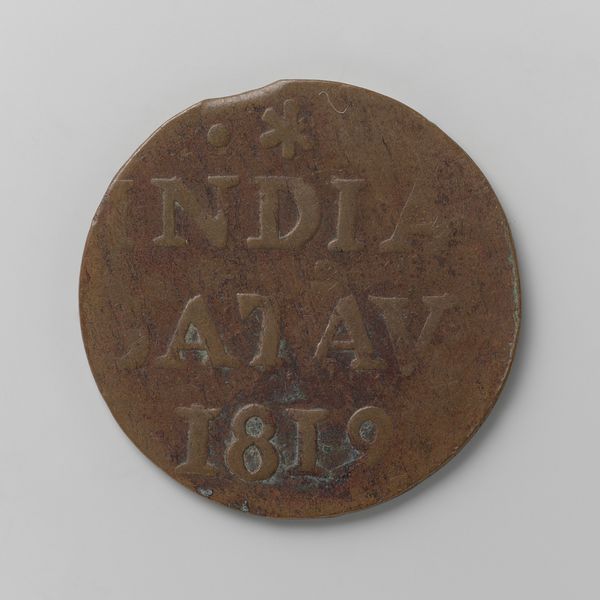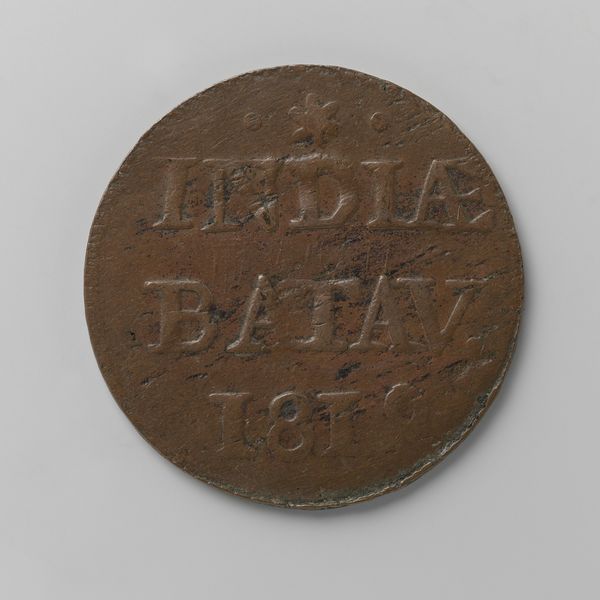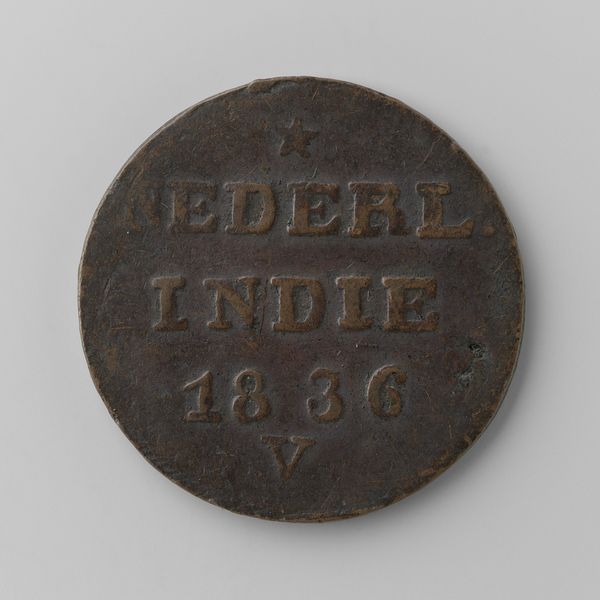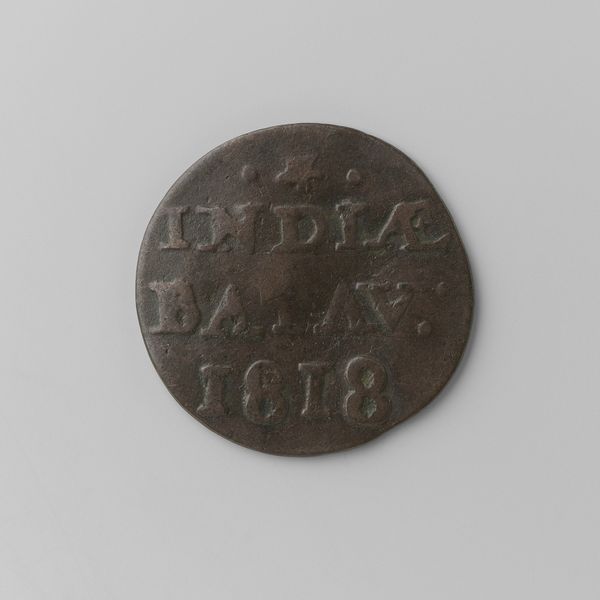
print, metal, bronze
#
dutch-golden-age
# print
#
metal
#
bronze
#
geometric
#
ancient-mediterranean
#
embossed
#
history-painting
Dimensions: diameter 2.8 cm, weight 5.84 gr
Copyright: Rijks Museum: Open Domain
This Half Stuiver coin from the Dutch East Indies was authorized by King Willem I in 1821. Minted from copper, its circular form and stamped design speak to the power of industrialization and colonialism. Consider the qualities of the metal itself: its reddish hue, its relative softness, and its ability to be cast and impressed. These features made copper an ideal medium for producing currency on a massive scale. The coin's design – inscriptions denoting its value and origin – was likely achieved through the use of a die, a hardened metal stamp that could quickly and consistently imprint the image onto the copper blanks. This coin represents more than just a monetary denomination; it embodies the complex relationship between the Netherlands and its East Indian colonies, the circulation of wealth, and the systematic extraction of resources. It’s a potent reminder that even the smallest, most commonplace objects can carry significant social and political weight, blurring the lines between art, craft, and the mechanics of empire.
Comments
No comments
Be the first to comment and join the conversation on the ultimate creative platform.
